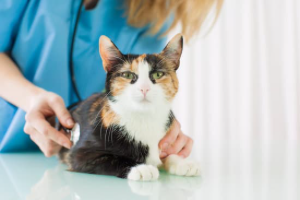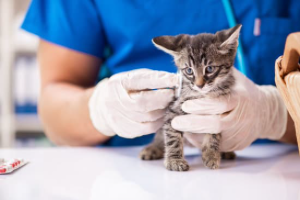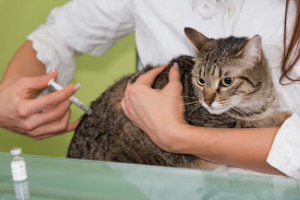There are fewer things that bring more smiles to the vet clinic than an owner bringing in their new wiggly, happy puppy. It’s an exciting time for families to be adding a new addition, but it can also be overwhelming too! We wish we had an hour to sit down with every family that comes in to go over some truly important puppy topics, but unfortunately that reality is not often possible. Because of this having resources for owners to read/keep has become a must. We’ve included top tips and considerations on puppy neutering here for new puppy owners!
There has been a lot of discussion about when you/should you have your pet neutered. The general consensus among the vet community is that neutering your pet is strongly encouraged for several reasons. This should always be a conversation between you and your vet.
TERMS: NEUTERING refers to the removal of gonads/reproductive organs. CASTRATION is the term used for males and OVARIOHYSTERECTOMY or SPAY is the term for females.
Why should you have your puppy neutered?
For male dogs, much of the interest in castration is to decrease behaviours that are related to the hormone testosterone. This includes aggression, territorial tendencies, sexual tendencies, and lifting their leg to urinate/urine marking. While these behaviors can continue AFTER castration, they are typically less likely to occur. Secondly, there are medical concerns. Intact male dogs are at increased risk for testosterone induced testicular cancers, prostatic abscesses/inflammation/cysts, and other types of testicular tumours. There remains the risk of unplanned parenthood, which despite many well intentioned owners often happens by accident when the dog is unsupervised. I can promise you that intact male and female dogs rarely care about the opposing breed, size of the dog, or any family relation – given the opportunity, breeding can occur.

There is a bit more “urgency” when it comes to spaying female dogs. While there is also a behavioural component, the risks here more so reflect medical concerns. Intact female dogs will have heat cycles consistently during their life and tend to behave more excitably during this time. This means that they will bleed 1-2 times annually as long as female hormones are still being created by the ovaries. Medically speaking, vets’ primary concerns are going to be increased risk of malignant mammary cancer and potential to develop a life threatening bacterial infection of the uterus called a pyometra. For every heat cycle a dog goes through, the risk of developing aggressive mammary cancer later in life increases. One heat cycle does not increase this risk significantly, but 2 or more heat cycles can result in an exponential rise in risk. Similarly, intact females will be at risk for developing a pyometra, or a bacterial infection within the uterus where it fills with pus. This is most common about 6-8 weeks after a cycle or pregnancy and can be a surgical emergency. Pyometra can be fatal if not addressed in a timely manner.
When should you have your puppy neutered?
In general vets tend to tell owners any time after 6 months in a healthy pup is appropriate. This allows them to get a little bigger and more mature prior to general anesthesia. For females, spaying around this time allows for the surgery to be done prior to the first heat cycle. This makes the surgery slightly less challenging as the uterus and ovaries will be smaller and have smaller blood vessels to address. As pets become larger and go through heat cycles, spaying becomes more involved.

I would be missing some newer studies if I didn’t mention that there has been conversation about increased risks of other cancers if pets are neutered too EARLY. One of those commonly discussed is osteosarcoma (bone cancer) in larger breed dogs such as labradors and shepherds. Similarly, there has been conversation about effects on growth and bone/joint formation in large breed dogs neutered early on in life. While these definitely have merit, the challenge becomes finding a balance in minimising risk overall. Many veterinarians are waiting longer prior to neutering large breed dogs for this reason. In many cases, vets and owners are waiting until closer to 12-18 months of age prior to neutering to facilitate growth.
What’s the difference between a keyhole spay and a regular spay?
A keyhole spay (laparoscopic spay) is a newer way to remove the female reproductive organs and involves using laparoscopic equipment. This means that rather than making a larger incision into the abdomen to gain access, a few small holes are made for the camera/scope and the surgical equipment. This is more costly than a normal spay due to the expertise and equipment required, but also is associated with less tissue trauma and quicker recovery. That being said, conventional spays are still a good standard of care and are completed often in general practice. Laparoscopy can also be used for cryptorchid castrations (when the testicles have not normally descended into the scrotum from the abdomen).
Puppy neutering is a way for pet owners to embrace preventative health care, in addition to helping control the pet population. Chat with a vet about when is best for your pup!
Dr. Kirsten Ronngren, DVM MRCVS




















